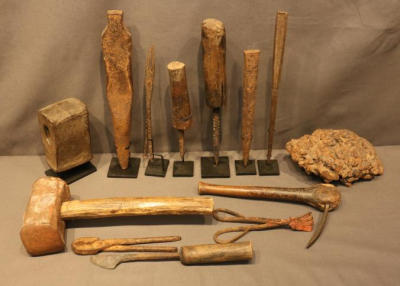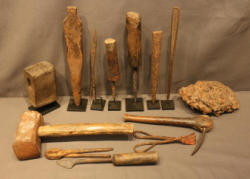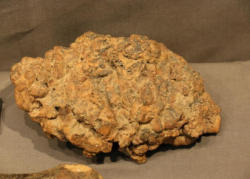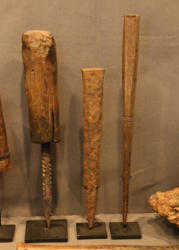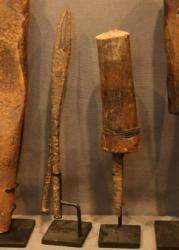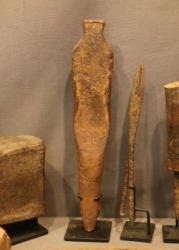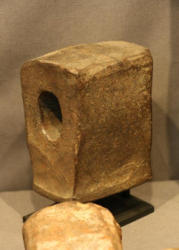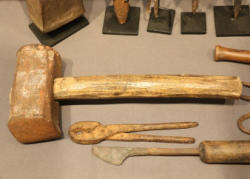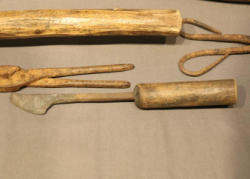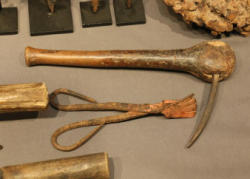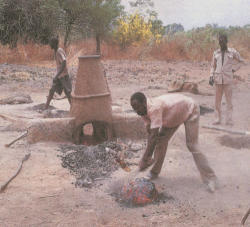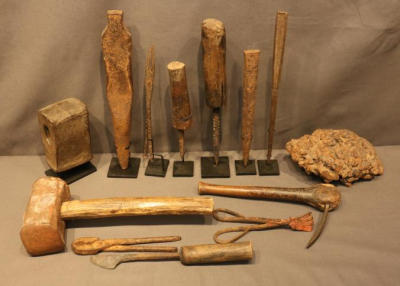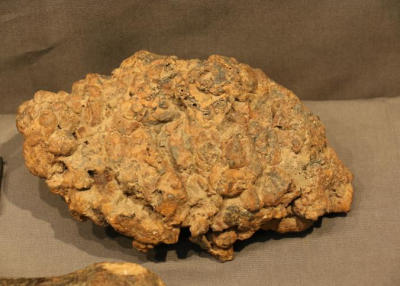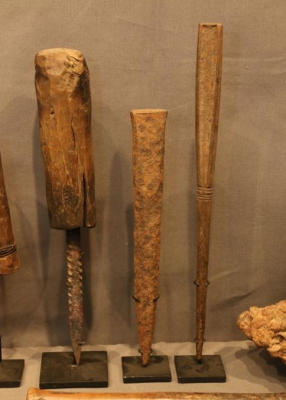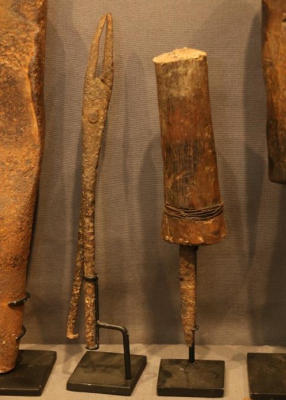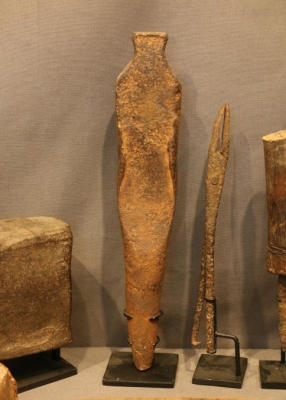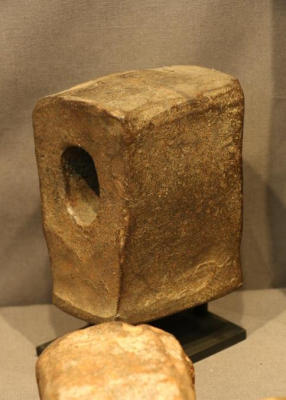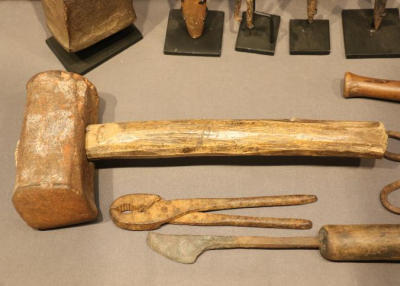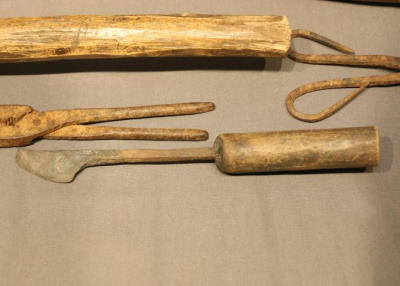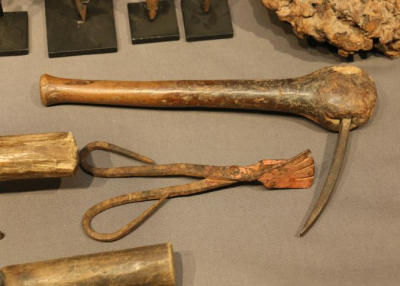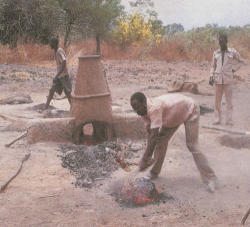Items located in Pleasant Valley, NY. Items include Faro, the water genie puppet from Mali; West African double gongs; Ode-lay society head crest mask from Sierra Leone; African sculptures, figurines, masks, textiles, ceremonial robes, copper rod currency, and more.
AFRICAN ART COLLECTION OF MARY SUE AND PAUL PETER ROSEN
Mary Sue and Paul Peter Rosen have collected African art for over thirty years, making nine trips to Africa to study the art in its cultural setting. The Rosens have published three African art books, curated more than ten exhibitions from their collection, and have given public lectures about African art and culture. They have donated art from their collection to various institutions including the Newark Museum, Temple University in Philadelphia, the SMA Fathers African Art Museum in Tenafly, New Jersey, and the African American Research Library in Fort Lauderdale, Florida.
Payment is due by Monday, April 1 at 1PM.
Pickup in Pleasant Valley, NY must be completed by Monday, April 1 at 3PM.
All lots sold as is, where is. There is a 15% Buyers Premium for all lots purchased. Payment methods include cash, MC, Visa, Discover or good check. You can make credit card payment online by going to your Member Area and selecting your invoice.
*NOTE* Shipping is available on all items.
AFRICAN ART COLLECTION OF MARY SUE AND PAUL PETER ROSEN
Mary Sue and Paul Peter Rosen have collected African art for over thirty years, making nine trips to Africa to study the art in its cultural setting. The Rosens have published three African art books, curated more than ten exhibitions from their collection, and have given public lectures about African art and culture. They have donated art from their collection to various institutions including the Newark Museum, Temple University in Philadelphia, the SMA Fathers African Art Museum in Tenafly, New Jersey, and the African American Research Library in Fort Lauderdale, Florida.
Payment is due by Monday, April 1 at 1PM.
Pickup in Pleasant Valley, NY must be completed by Monday, April 1 at 3PM.
All lots sold as is, where is. There is a 15% Buyers Premium for all lots purchased. Payment methods include cash, MC, Visa, Discover or good check. You can make credit card payment online by going to your Member Area and selecting your invoice.
*NOTE* Shipping is available on all items.
?EMBLEMS OF POWER. ASAFO FLAGS FROM GHANA? BY M.S. AND P.P. ROSEN IS ONLY AVAILABLE FROM THE AUTHORS AT ppr2001@med.cornell.edu PRICE POSTPAID IN US IS $25.00; OUTSIDE US POSTPAID $35.00.
Auction Info
Items located in Pleasant Valley, NY. Items include Faro, the water genie puppet from Mali; West African double gongs; Ode-lay society head crest mask from Sierra Leone; African sculptures, figurines, masks, textiles, ceremonial robes, copper rod currency, and more.
AFRICAN ART COLLECTION OF MARY SUE AND PAUL PETER ROSEN
Mary Sue and Paul Peter Rosen have collected African art for over thirty years, making nine trips to Africa to study the art in its cultural setting. The Rosens have published three African art books, curated more than ten exhibitions from their collection, and have given public lectures about African art and culture. They have donated art from their collection to various institutions including the Newark Museum, Temple University in Philadelphia, the SMA Fathers African Art Museum in Tenafly, New Jersey, and the African American Research Library in Fort Lauderdale, Florida.
Payment is due by Monday, April 1 at 1PM.
Pickup in Pleasant Valley, NY must be completed by Monday, April 1 at 3PM.
All lots sold as is, where is. There is a 15% Buyers Premium for all lots purchased. Payment methods include cash, MC, Visa, Discover or good check. You can make credit card payment online by going to your Member Area and selecting your invoice.
*NOTE* Shipping is available on all items.
AFRICAN ART COLLECTION OF MARY SUE AND PAUL PETER ROSEN
Mary Sue and Paul Peter Rosen have collected African art for over thirty years, making nine trips to Africa to study the art in its cultural setting. The Rosens have published three African art books, curated more than ten exhibitions from their collection, and have given public lectures about African art and culture. They have donated art from their collection to various institutions including the Newark Museum, Temple University in Philadelphia, the SMA Fathers African Art Museum in Tenafly, New Jersey, and the African American Research Library in Fort Lauderdale, Florida.
Payment is due by Monday, April 1 at 1PM.
Pickup in Pleasant Valley, NY must be completed by Monday, April 1 at 3PM.
All lots sold as is, where is. There is a 15% Buyers Premium for all lots purchased. Payment methods include cash, MC, Visa, Discover or good check. You can make credit card payment online by going to your Member Area and selecting your invoice.
*NOTE* Shipping is available on all items.
?EMBLEMS OF POWER. ASAFO FLAGS FROM GHANA? BY M.S. AND P.P. ROSEN IS ONLY AVAILABLE FROM THE AUTHORS AT ppr2001@med.cornell.edu PRICE POSTPAID IN US IS $25.00; OUTSIDE US POSTPAID $35.00.
Categories:
AFRICAN BLACKSMITH’S TOOLS AND RARE IRON “BLOOM” FROM ANCIENT FORGE. Many of the traditional tools used by African blacksmiths were made by the blacksmiths themselves and passed on from one generation to the next. Smithing was often a hereditary occupation, with sons serving as apprentices to their fathers. Consequently, the tools of the trade were highly prized by the family and would only be sold with the concurrence of the male members of the family. Proceeds of such a sale were then divided among the male family members or used to purchase new tools. (A) Adze. Baga people, Guinea. Used to carve wood, as handles for hoes. Fine patina on handle. Wood, hand forged iron. H 11.5in. (B) Awls (2) Mandingo people, Guinea. Used to burn holes in wood or thin sheets of metal. Each on custom base. Shaft of B1 hand forged iron. Handle reinforced with wire. Wood, wire, iron. H 9in. Shaft of B2 forged from rebar. Handle partly charred. Wood, iron. H 12.5in. (C) Tongs for holding heated iron (2). C1 hand forged and made by blacksmith. On custom base. Iron. H 8.5in. C2 with spatula jaws. Hand forged by blacksmith. Iron, pigment. H 8in. (D) Pliers. Dogon people, Mali. Used to grip heated iron. H 8in. (E) Soldering iron. Senufo people, Ivory Coast. Wood, iron. H 11.5in. (F) Anvil. GoGo people, Tanzania. The spiked end was stuck in the ground. Interesting shape with shoulders. On custom base. Hand forged iron. H 13in. (G) Anvil. Matakam people, Cameroon. Hand forged iron with oxidation. On custom base. H 10in. (H) Anvil/punch. Tanzania. Note decorative rings on shaft. Hand forged iron. On custom base. H 13.5in. (I) Hammer with white pigment on head. Wood handle with fine patina. Baga people, Guinea. Head 9lb. Wood, iron. H 14in. (J) Hammer head (11lb). Mandingo people, Guinea. Also used as an anvil. On custom base. H 5in. (K) Iron “bloom” from an ancient smelting forge. Excavated near Kumbija Kaabaakoun village, Gambia. Estimated to date from the 1700s or earlier. This find is extremely rare because most excavations of ancient iron forges uncover only slag. For some unknown reason, the “bloom” was left at this site. This is the form that iron took after the ore was smelted in the forge and extracted from the furnace as the “bloom”. The furnace was considered to be a womb and the smelting process the gestation period. Thus, extracting the “bloom” was giving birth to the iron. The next step was to separate the slag consisting of remnants of the ore from the “bloom”. This “bloom” measures 8.5in in greatest diameter and weighs 4.5lb. See picture showing blacksmith hammering a “bloom” to loosen the slag.
More Details
AFRICAN BLACKSMITH’S TOOLS AND RARE IRON “BLOOM” FROM ANCIENT FORGE. Many of the traditional tools used by African blacksmiths were made by the blacksmiths themselves and passed on from one generation to the next. Smithing was often a hereditary occupation, with sons serving as apprentices to their fathers. Consequently, the tools of the trade were highly prized by the family and would only be sold with the concurrence of the male members of the family. Proceeds of such a sale were then divided among the male family members or used to purchase new tools. (A) Adze. Baga people, Guinea. Used to carve wood, as handles for hoes. Fine patina on handle. Wood, hand forged iron. H 11.5in. (B) Awls (2) Mandingo people, Guinea. Used to burn holes in wood or thin sheets of metal. Each on custom base. Shaft of B1 hand forged iron. Handle reinforced with wire. Wood, wire, iron. H 9in. Shaft of B2 forged from rebar. Handle partly charred. Wood, iron. H 12.5in. (C) Tongs for holding heated iron (2). C1 hand forged and made by blacksmith. On custom base. Iron. H 8.5in. C2 with spatula jaws. Hand forged by blacksmith. Iron, pigment. H 8in. (D) Pliers. Dogon people, Mali. Used to grip heated iron. H 8in. (E) Soldering iron. Senufo people, Ivory Coast. Wood, iron. H 11.5in. (F) Anvil. GoGo people, Tanzania. The spiked end was stuck in the ground. Interesting shape with shoulders. On custom base. Hand forged iron. H 13in. (G) Anvil. Matakam people, Cameroon. Hand forged iron with oxidation. On custom base. H 10in. (H) Anvil/punch. Tanzania. Note decorative rings on shaft. Hand forged iron. On custom base. H 13.5in. (I) Hammer with white pigment on head. Wood handle with fine patina. Baga people, Guinea. Head 9lb. Wood, iron. H 14in. (J) Hammer head (11lb). Mandingo people, Guinea. Also used as an anvil. On custom base. H 5in. (K) Iron “bloom” from an ancient smelting forge. Excavated near Kumbija Kaabaakoun village, Gambia. Estimated to date from the 1700s or earlier. This find is extremely rare because most excavations of ancient iron forges uncover only slag. For some unknown reason, the “bloom” was left at this site. This is the form that iron took after the ore was smelted in the forge and extracted from the furnace as the “bloom”. The furnace was considered to be a womb and the smelting process the gestation period. Thus, extracting the “bloom” was giving birth to the iron. The next step was to separate the slag consisting of remnants of the ore from the “bloom”. This “bloom” measures 8.5in in greatest diameter and weighs 4.5lb. See picture showing blacksmith hammering a “bloom” to loosen the slag.
High Bid:
$90.00 – mryan1954
Auction Type: One Lot
Quantity: 1
Bidding has closed on this lot

